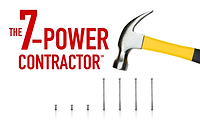Al Levi: How are you judging your staff’s performance?
Evaluate your employees on objective standards.

With every new consulting client, I begin our work by asking the following: “How are you judging your staff’s performance?”
The answers are pretty much the same, and they go something like this: “We think,” “We’ve been told” or “Because I’ve been in business for a while, I know who is and isn’t performing well.”
To which, my reply is: “So, you’re basing your judgment of them either doing a good job or a bad job at the work they’re hired to do based on opinion or other subjective measures. Am I right?”
With a sheepish look on their face, they mutter, “Yes, I guess so.”
I know this sounds embarrassing, but it’s not meant to be anything but helpful. I know exactly how they feel and how they got where they are because I, too, once judged my employees’ performance solely on opinion and subjective feelings. Nothing in my company was based on an objective standard until we made a change.
Objective judgement
So, how do you tip the scales in the right direction of objective vs. subjective judgement when it comes to evaluating employees’ performance? You start by creating manuals that outline the policies and procedures for the 80% of whatever position on the organizational chart they occupy. And make that the objective standard.
The trick is the language needs to be crystal clear with benchmarks that aren’t subject to opinion. Here’s a good example of what I’m talking about.
Have you ever had a discussion with a tech about the way they’re dressed? Bet you have, all the time. It probably goes something like this:
You say, “That’s not how we dress around here.”
The tech replies, “I think I’m dressed right.”
You respond: “Your shirt is untucked, and the shirt is unbuttoned to the middle of your chest. That’s not how we wear our uniform shirts here.”
The tech says, “I never knew that.”
You say, “Sure. You remember we talked about that.”
To which, they respond: “Nope. I have a great memory and I would have remembered — I think.”
See how this is going nowhere?
How about having the way the uniform shirts are to be worn written in your technician manual? Want more?
How about saying what type of belt is acceptable? How about saying what type of uniform pants are to be worn, and at what level on your body? Have you seen them looking like they’d fall off? Bet you have.
The shoes they wear and what kind of condition they must be maintained is critical because from the little things, the big things come. If you can’t get them to dress the right way, what else can’t you get them to do in the field? The answer is plenty!
Photo finish
Want more objective methods vs. subjective?
Try taking a photo of them dressed the right way. The way you outlined it in the tech manual. Then, just wait. Wait for them to walk in one day looking anything but like that photo and do the following:
You pull the tech into your office and close the door and say, “How is the way you’re dressed today like this photo of you?”
Discussion over. All that remains is to engage the steps of discipline that I share with my clients. They are:
- Let them know you’ve talked and you’re putting a note in their file. If nothing comes of it in six months, you’ll rip it up;
- Let them know if we have to talk about this again, the next step is a formal write-up;
- Let them know if they persist, the next step would be a suspension; and
- Let them know if it doesn’t end, they risk being dismissed.
Now, if you promise and deliver on the phrase, “We offer careers not a job,” then you can say this as they move along in the steps of discipline: “Tell me how your behavior is showing me you want the career we’ve talked about. Because what you’re demonstrating today isn’t showing me that you’re performing in the box you’re in on the organizational chart, so going for the next higher box and making more money in your expanding career is alluding you.”
How great is running your business like this? You’re no longer the bad guy. The manuals and the objective evidence are the bad guy because it’s the rules everyone has agreed to play by.
Got a secret for you. Your employees are dying for you to raise your standards and to hold people accountable to objective things. “A” and “B” players don’t want to be saddled with the “C” and “D” players you allow to keep working at your company.
Start documenting in writing today about what it takes for them to know what objective standards they must hit to win and to keep moving ahead, and enjoy a less stressful and more successful work environment.
Looking for a reprint of this article?
From high-res PDFs to custom plaques, order your copy today!








